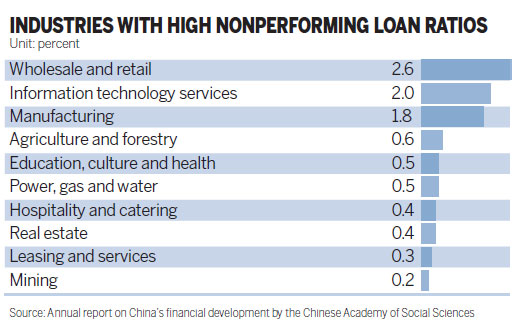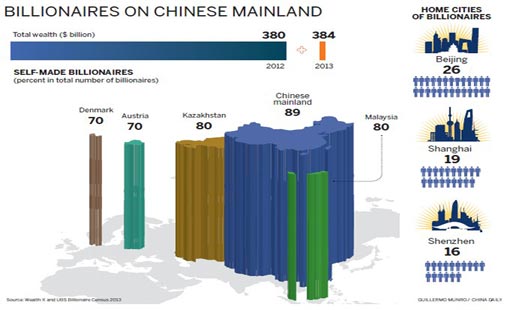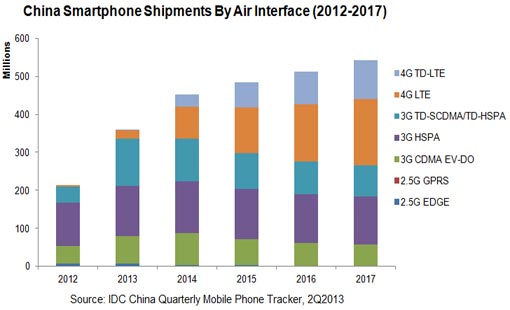Study identifies worst sectors for NPLs
Updated: 2013-12-26 08:15
The three sectors with the highest rates of nonperforming loans this year have been wholesale and retail (2.6 percent), information technology services (2 percent) and manufacturing (1.8 percent), according to a study released by a central government think tank on Wednesday.
These rates were far above the overall NPL average, which was 0.97 percent as of Sept 30, according to figures from the nation's banking regulator.
The industry-specific figures are contained in the annual report on China's financial development, compiled by the Institute of Finance and Banking at the Chinese Academy of Social Sciences.
Nationwide, total outstanding NPLs increased by 24.1 billion yuan ($3.96 billion) in the third quarter to 563 billion yuan, according to the China Banking Regulatory Commission.
The sectors noted in the study "are very vulnerable to economic cycles. Once economic growth slows down, enterprises in these sectors will face more downward pressure on their operations, affecting their loans", said Wang Guogang, director of the institute.
The "safest" sectors include mining, utility management and social services, which have NPL rates hovering around 0.2 percent, according to the study.
The average NPL rate of the real estate industry stood at 0.4 percent, partly reflecting the booming status of the property sector.
Geographically, the NPL rate in the Yangtze River Delta region is much higher than other regions, according to the study. Enterprises in the region were hardest-hit during the most recent phase of the economic slowdown, increasing their credit risks, said Wang.
"As China's economic growth will slow down further in 2014, the NPL rate will climb further in 2014, but it will remain in a controllable range," said Zeng Gang, a professor at the CASS.
According to Yang Zaiping, executive vice-president of the China Banking Association, domestic banks can handle an NPL rate that is lower than 3 percent.
"The latest surge in NPLs has been triggered by the economic slowdown and industrial restructuring, and this is the price we pay for higher-quality, healthy growth," said Yang.
NPLs among enterprises that are affected by the nationwide campaigns to eliminate outdated industrial capacity and curb local government financing vehicles will further increase next year, Yang said.







